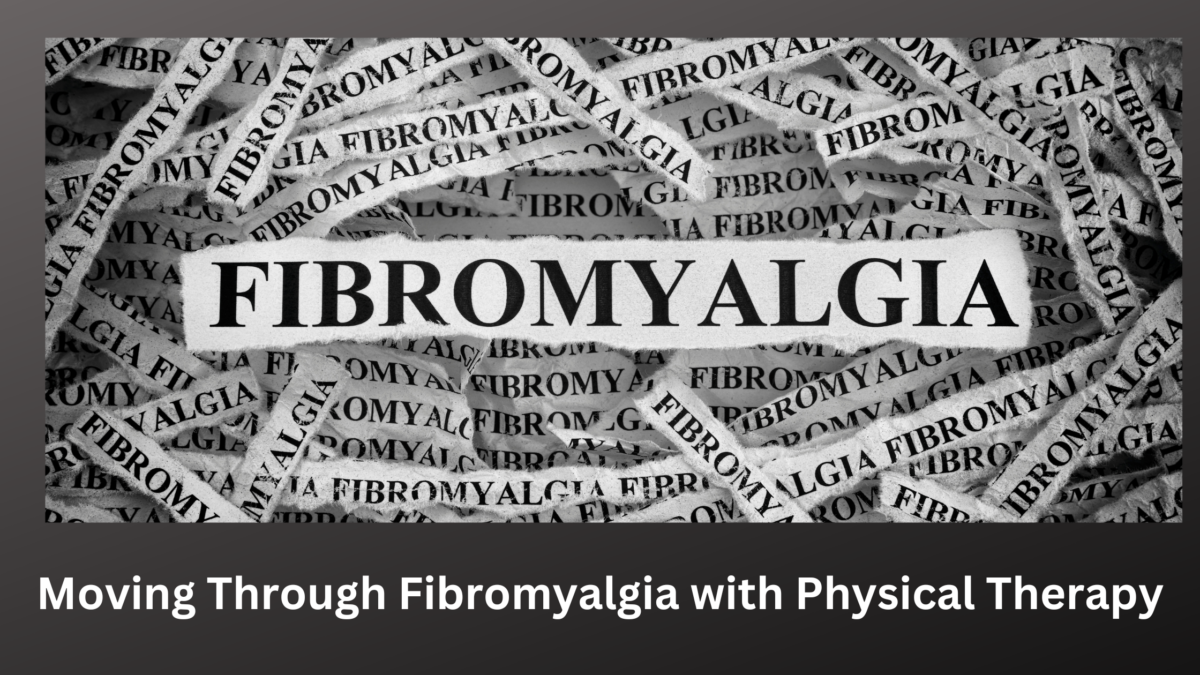Nearly 5 million people in the United States have been diagnosed with fibromyalgia – a chronic (long-lasting) disorder that causes pain and tenderness throughout the body, as well as fatigue. Scientists do not fully understand what causes this disorder, but people with fibromyalgia may experience a variety of symptoms, including a global heightened sensitivity to pain, digestive issues, memory issues – sometimes described as ‘brain fog’ – and mood and/or sleep disorders. Fibromyalgia can be difficult to manage and can severely impact quality of life. The best treatment plans combine exercise, pain management strategies and education and self-care support. Physical therapists are experts in all three, so they’re an ideal practitioner to help!
Exercise
Currently, activity recommendations for the management of fibromyalgia include gentle aerobic activity, flexibility exercises, and some strength training. The right exercise routine can help with pain, fatigue, sleep disturbances, depression, and more. A combination approach to activity is typically the most effective. In addition to land-based exercise, some clinics also have the option of aquatic therapy. This combines the benefits of exercise with the warmth of a therapeutic pool.
You and your PT will work together to find the right type and intensity of exercise to best manage your symptoms.
Pain Management Strategies
Exercise isn’t the only tool the PT has to help people with fibromyalgia. Gentle manual therapy addressing joint and/or muscle stiffness has been shown to help reduce pain and soreness associated with fibromyalgia. Physical therapists also can help patients understand how to use modalities such as heat or cold therapy to reduce symptoms and can help patients to improve body mechanics for daily tasks and the ergonomics of home and/or workplace areas.
Education & Self-Care Support
Education is another important component in treating fibromyalgia. A physical therapist spends more time with their patients than most other practitioners. They have the time to help you understand what’s going on, and to provide suggestions about what you can do to manage symptoms. Your PT may also help you to work on stress-management, pacing strategies, sleep hygiene, and other healthy lifestyle choices. Research shows that people with more knowledge about their condition have better coping mechanisms, more confidence, and better treatment outcomes.
While there is no currently known cure for fibromyalgia, physical therapists can help with pain management, strength, mobility, fatigue and function to help patients find relief from their symptoms.
References:
- Research (peer-reviewed)
- Therex effectiveness – https://www.ncbi.nlm.nih.gov/pmc/articles/PMC5632473/
- PT for fibromyalgia – https://pubmed.ncbi.nlm.nih.gov/31140398/
- Exercises for fibro – https://pubmed.ncbi.nlm.nih.gov/29185675/
- Manual therapy for fibro – https://pubmed.ncbi.nlm.nih.gov/32604939/
- Aquatic PT for fibro – https://pubmed.ncbi.nlm.nih.gov/23818412/
- Effectiveness of exercise with fatigue, etc for fibro – https://pubmed.ncbi.nlm.nih.gov/32721388/
- Articles and Content

